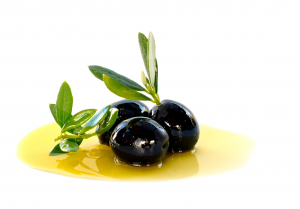In the Spotlight
CHARCUTERIE: Tips for navigating the charcuterie menu
April, 2018
Have you ever seen charcuterie (pronounced shar-kood-eree) on the menu of your favourite restaurant but felt too intimidated to ask what everything was? Or maybe you want to serve a beautiful board of meats and cheese at your next cocktail party but don’t know how to create the perfect balance. Well, we’ve got you covered. Charcuterie is not only an elegant way to spoil your guests, the menu is a lot easier to navigate than you might think. Here are some basics to get you started.
The Cheeses

Veined Cheese
What it is: Veined (bleu) cheese is infused with penicillin mould to create its signature, strong flavours. The higher the quality of the cheese, the greater the depth of flavour.
Flavour profile: While salty and sharp are the prominent flavours, quality veined cheeses will also have sweet, nutty or even spicy notes.
Texture: Veined cheese can be crumbly, buttery or firm.
Names to watch for: Mild bleus include Bavarian Bleu, Stilton (English) and -Gorgonzola Dolce (Italian). If you are feeling adventurous, try Valdeón (Spanish), Roquefort (French) or Gorgonzola natural (Italian).
Interesting fact: The ripening cheese is pierced with long needles to encourage mould threads to spread.
Soft-ripened Cheese
What it is: Soft cheese with a white or cream-coloured edible rind.
Flavour profile: Soft-ripened cheeses come in a range of flavours, including fruity, garlicky, salty and tart. Look for cheese with added fruit or herbs for extra flavour.
Texture: These cheeses are soft and creamy even when cold, and they melt easily.
Names to watch for: Brie (French), Munster (German) and Camembert (French) are well-known varieties, but delis often carry a selection of interesting local cheeses. Ask about them.
Interesting fact: To test whether the cheese is ripe, press gently in the centre of the round—a ripe cheese will give just a little.
Fresh Cheese
What it is: Fresh cheeses are the only unripened cheese.
Flavour profile: Mild and less complex than their ripened counterparts, fresh cheeses are milky and may be infused with pepper, herbs, garlic or fruit.
Texture: Fresh cheeses can be crumbly, stringy or creamy. Try for a variety.
Names to watch for: Look for mozzarella, paneer (South Asian and traditionally made from buffalo’s milk or cow’s milk), feta and chèvre (fresh goat’s cheese).
Interesting fact: Fresh cheeses are not fermented of infused with preservatives and, therefore, must be eaten sooner rather than later (not a hardship for most cheese lovers).
The Meats
What they are: Meats are the uncontested stars of any charcuterie platter.
Flavour profiles: Try to incorporate several flavours into your platter by choosing from more than one flavour profile—for example, smoky, salty and spicy.
Texture: Look for a variety of textures as you build your charcuterie. Include harder dry-cured sausage like salami, some dry-cured meats like jamón serrano (Spanish ham) or prosciutto (Italian ham), and don’t forget to round it all out with a soft pâtè.
Names to watch for: Your choices are almost limitless, and many are made in-house at local restaurants. Prosciutto, salami, -mortadella and spicy capicolla are perennial favourites.
Interesting fact: Traditional charcuterie meats are rich, so only serve approximately 2 ounces per person for an appetizer. Double that if your charcuterie is the main attraction at a cocktail party.
The Condiments
What they are: Condiments can be thought of as the supporting actors on the charcuterie board. They are there to help showcase the stars by balancing and enhancing the flavours of the meats and cheeses.
Flavour profiles: Savory mustards, sweet jams and preserves help counter the salty focus of many charcuterie trays. The acidity of olives and brined vegetables (such as gherkins or onions) help cleanse the palate of strong flavours. Don’t forget both fresh and dried fruit to finish your platter.
Texture: Any mustard, whether grainy or smooth, will complement your board. Use jams and preserves with bits of fruit to provide bursts of flavour. The crunch of pickles and other brined vegetables will contrast and complement the soft-mouth-feel of the cheeses and meats.
Names to watch for: Select bold flavours for your spreadable condiments, such as stone-ground or maple mustard, fig spread, apricot or cherry jam and hummus.
Interesting fact: Though we’re used to seeing plump, brine-packed olives in the deli, dry olives are also a popular option. The drying process creates a concentrated flavour, which is often enhanced by olive oil and herbs. You’ll know these olives by their wrinkly appearance. t8n
- brie
- camembert
- cheese
- gorgonzola
- ham
- herbs
- meat
- mortadella
- munster
- olives
- pickles
- prosciutto
- salami
- stilton












